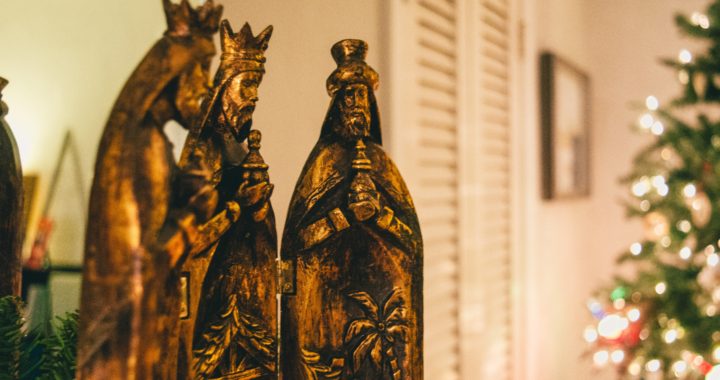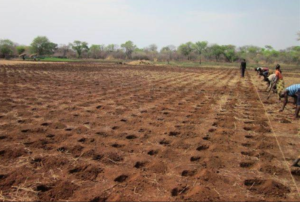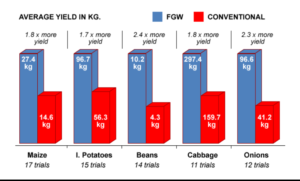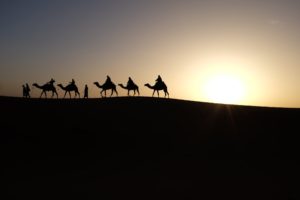Every Christmas season we see beautiful Nativity scenes that are carefully assembled behind a backdrop of trees, cattle, sheep, the Bethlehem star, a humble stable and a cattle trough bearing the birth of baby Jesus. We find Joseph and Mary huddled around our newborn Redeemer-King and there to the side we see camels and “three wise men” presenting gifts to the Christ child. But is that what the Bible says? And just who were the Magi?
The Magi were from the East in the area of Mesopotamia. The term “wise men” in Matthew 2:1 is translated from the Greek “magoi” which is derived from a Persian proper noun and was the name of their caste. Their origins date to the 7th century BC. They were a mystical, hereditary priesthood devoted to astronomy and watching for signs in the heavens. They were said to possess an ethereal quality while exuding great spiritual power and authority. And they were enormously wealthy. The Magi were deeply invested in political power through a succession of declining powers, the Babylonian, Medo-Persian, Greek and Parthian. They were the kingmakers of the East wielding great power and influence in the succession of thrones in the area of present day Iran. When their upper council, the Megistanes, met to declare God’s will to the authorities, their decisions were considered to be binding.
History further tells us that during the mid-6th century BC in the reign of Cyrus the Great, they began to be associated with Zoroastrian faith which honored a single, self-created “god of light.” As monotheistic priests they mediated between God and man and performed blood sacrifices on altars. Due to the historical encounter with Jews during the Babylonian Captivity they became extremely close to ancient Jewish worship and prophecy. At the end of their exile in 536 BC the prophet Daniel lived among them and was a very respected spiritual authority.
First of all, the Magi would never have been wearing royal robes made of purple, scarlet, blue and gold thread. The Magi wore white conical hats with side flaps and their robes were made of pure white. They never wore turbans and you would never find them riding a camel for they despised them. They were renowned for breeding excellent horses which they preferred. In fact, they bred the steeds that became forerunners of today’s magnificent Arabian horses. When they traveled, they were not two or three, but hundreds. They traveled with massive caravans composed of armed cavalry, attendants, cooks, entertainers, soldiers, wagons and servants. Their company may have approached up to 1,000 and their mere presence would have been one of the most imposing and intimidating spectacles of the ancient world.
“Now when Jesus was born in Bethlehem of Judaea in the days of Herod the king, behold, there came wise men from the east to Jerusalem, Saying, Where is he that is born King of the Jews? For we have seen his star in the east, and are come to worship him. When Herod the king had heard these things, he was troubled, and all Jerusalem with him. And when he had gathered all the chief priests and scribes of the people together, he demanded of them where the Christ should be born. And they said unto him, In Bethlehem of Judaea: for thus it is written by the prophet, And thou Bethlehem, in the land of Juda, are not the least among the princes of Juda: for out of thee shall come a Governor, that shall rule my people Israel. Then Herod, when he had privily called the wise men, inquired of them diligently what time the star appeared.” (Matthew 2:1-7)
It says that “all Jerusalem” was distressed by the presence of the Magi, whom they knew possessed the power to make and break monarchies, and Herod was a political puppet of Rome. Herod was most likely deeply intimidated and he was intently interested in when the Magi saw the “Bethelehem star.” We know from the Bible that this event occurred possibly a year or more after the birth of Jesus. How?
After meeting with the Magi, Herod sent them south to Bethlehem. “And he sent them to Bethlehem, and said, Go and search diligently for the young child; and when ye have found him, bring me word again, that I may come and worship him also. When they had heard the king, they departed; and, lo, the star, which they saw in the east, went before them, till it came and stood over where the young child was. When they saw the star, they rejoiced with exceeding great joy. And when they were come into the house, they saw the young child with Mary his mother, and fell down, and worshiped him: and when they had opened their treasures, they presented unto him gifts; gold, and frankincense, and myrrh. And being warned of God in a dream that they should not return to Herod, they departed into their own country another way.” (Matthew 2:8-12)
Three things to note. The Greek word for “young child” is “paidion” which means “toddler” In other words the child is now a toddler most likely walking around 15+ months old at the time of this event. And they are not at a manger in Bethlehem but instead in a “house.” When the Magi found the Christ child they found a toddler and not a baby. For reasons we do not know, Joseph and Mary returned to Bethlehem from Nazareth a year or so after Jesus’ birth. And finally, we know that it was the God of Israel who brought the Magi to Bethlehem but also warned them not to return to King Herod but to depart in a different manner.
The Idumean Herod was king by appointment of Rome and fearing for his throne he then committed great tragedy. “Then Herod, when seeing that he was mocked by the wise men, was exceeding wroth, and sent forth, and slew all of the children that were in Bethlehem, and in all the coasts thereof, from two years old and under, according to the time which he had diligently inquired of the wise men.” (Matthew 2:16)
At the Lord’s leading, the Magi had simply come to Bethlehem in their official role, to confer upon Jesus the title of King and High Priest of Israel. They knew a great prophesied King had been born and they chose to honor Him. How do we know this?
The gifts presented to Jesus by the Magi were of extreme monetary value but, more importantly they held great symbolic value as well.
The first gift, gold, is symbolic of monarchy, and it reminds of the wealth of Solomon’s Kingdom. (1st Kings 10:21-22) What they brought was the wealth appropriate to the King, affirmed by the kingmakers themselves.
Frankincense is the second gift and it symbolizes the acts of the Levitical priesthood, and the prayers of the people. Frankincense was among the ingredients that were placed in the Tabernacle’s altar of incense by the priest. (Exodus 30:34-36) In giving this gift to Jesus, it prophetically pointed to His resurrected and glorified state as our High Priest and intercessor.
The third gift is myrrh which is also associated with the Aaronic priesthood. It is the principal ingredient of the holy anointing oil, the ingredients having been given to Moses from the Lord: (Exodus 30:22-25; 30) If you read Matthew 26:6-12 you will find that the word “ointment” is the Greek word “muron” from “murra” which means myrrh oil and which is also used for burial purposes. In this passage Jesus even states this myrrh oil was given for His burial.
Even at His infancy, the Magi recognized Jesus as King and High Priest but the gifts also foretold of His death and burial.
It was an appointed time, a rare season. Jesus Christ was born at the exact and perfect time fulfilling foretold prophecies of the Bible. The Magi were also rare men who were able to discern the times and seasons looking for Him. In like manner Jesus will return at His Second Coming at a perfect and appointed time. Are you looking for Him?

 “My people perish for lack of knowledge.” (Hosea 4:6)
“My people perish for lack of knowledge.” (Hosea 4:6) Is it effective?
Is it effective? Most Christians believers today think of the Rapture of the Church as being a New Testament concept or mystery that was revealed by Paul only after the resurrection and ascension of our Lord Jesus Christ. It is known through various names as “the appearing” or “the blessed hope” or the “catching away” or “the gathering” or “the receiving” or “the changing” and there are several others. But does the event known as the “Rapture” appear in the Old Testament?
Most Christians believers today think of the Rapture of the Church as being a New Testament concept or mystery that was revealed by Paul only after the resurrection and ascension of our Lord Jesus Christ. It is known through various names as “the appearing” or “the blessed hope” or the “catching away” or “the gathering” or “the receiving” or “the changing” and there are several others. But does the event known as the “Rapture” appear in the Old Testament?